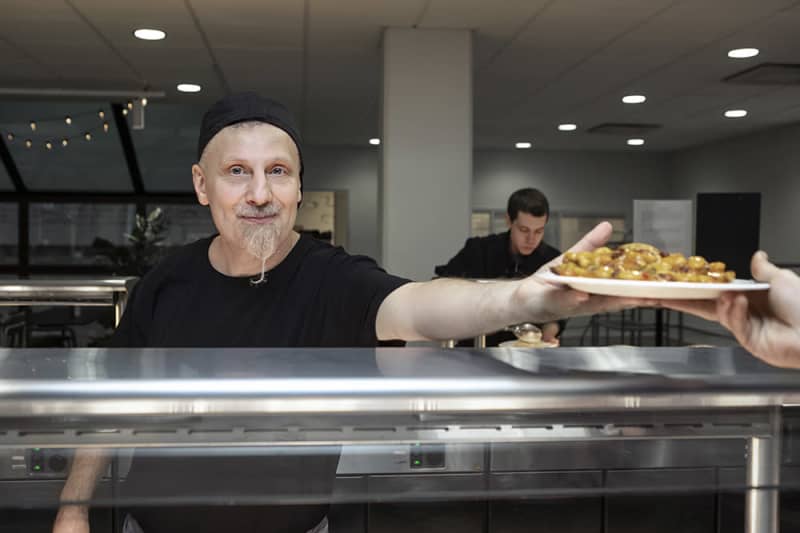
In the future, the carbon footprint of all Unicafe lunches will be smaller than the average Finnish lunch.
Helsinki’s Unicafe student restaurants started marking the carbon footprint of meals on all portions on Monday.
The purpose of the reform is to communicate the climate effects of food and to guide customers to make more climate-friendly decisions. For labeling purposes, the company calculated the carbon footprint of more than 200 products on the menu.
For example, the climate-warming effect of the aforementioned Mexican sausage is 1.21 kilograms of carbon dioxide equivalent per serving.
Meals with the lowest carbon footprint are marked separately with the Climate Choice symbol. It is given to portions with a carbon footprint of no more than 0.5 kg CO2e. According to Unicafe, these doses are in line with the 1.5 degree goal of the Paris Climate Agreement.
A below average lunch
Unicafe already gave up the food that causes the most emissions in 2020, when it stopped serving beef in its restaurants. The climate load caused by beef can be several dozen times compared to, for example, tofu.
– Another option would have been to offer a beef meal with a stamp on the side that this produces huge climate emissions. However, it would have been strange communication, and the question would arise as to why this is offered at all, Ruuska says.
According to Unicafe, the carbon footprint of an average Finnish lunch is 1.4 kg CO2e. All the company’s student lunches now fall below this, and in the future the menu is to be developed to be even lower in emissions.
The construction world as an inspiration
The standard in the construction world is that emission calculation is open information for everyone, but in food emission calculation the information is scattered.
– We have huge construction projects underway, and we are able to calculate the carbon emissions of projects worth tens of millions of euros. The question arose, why the hell don’t you know how to calculate the same thing for lunch? Basically, lunches are much simpler, and there are far fewer ingredients in one lunch than in one building, explains Ylva Group’s Ruuska.
Ruuska reminds that calculating the carbon footprint is complicated, and the figures reported by Unicafe are not necessarily completely accurate. However, by comparing emissions, you can compare doses with each other and get an idea of \u200b\u200bwhat kind of carbon footprints the doses have in relation to each other.
*–* The calculation can be done very differently, and there is no specific standard. It may be that different operators calculate in different ways, and there are different results with different starting assumptions. For example, depending on whether land change emissions are taken into account when looking at emissions from agricultural products or not, there are very different results.
According to Ruuska, even in the food world it is already known with sufficient accuracy what kind of emissions each food item causes.
– There is no reason to expect that we will have the correct numbers for emissions. Now is the time to use the best available information to see what those numbers are and update them when new information becomes available.
*You can discuss the topic on 9.11. until 11 p.m.*
